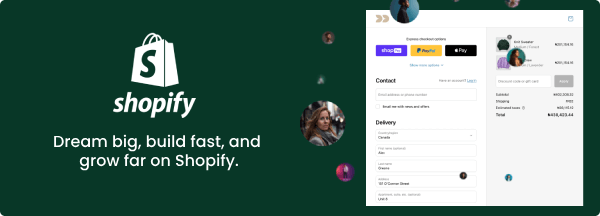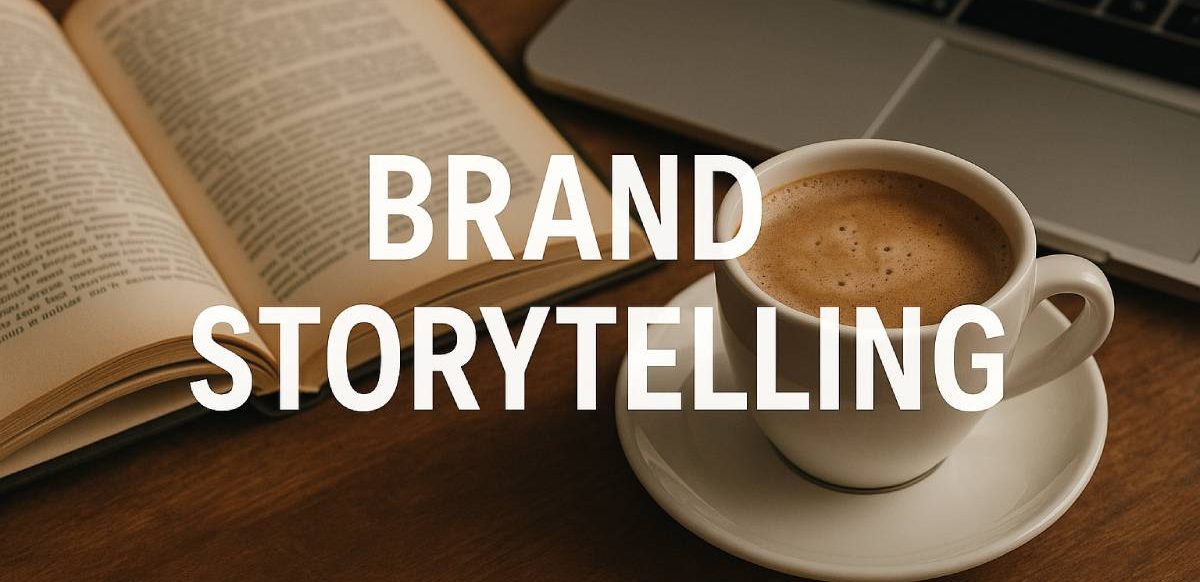People don’t buy what you do; they buy why you do it.
This popular marketing insight captures a profound truth, consumers instinctively crave narratives, not just specifications. From the Coke ads of the 1970s to today’s viral brand campaigns, storytelling has proven to engage our brains, hearts, and wallets.
Neuroscience shows that a well-told narrative lights up sensory and emotional centers in the brain, releasing oxytocin and dopamine that spark empathy and memory.
In contrast, dry facts and specs rarely trigger these strong responses. No wonder Jerome Bruner found that “a fact wrapped in a story is 22 times more memorable” than a bare fact. In marketing, great stories stick, build trust, and drive action, whereas product specs fade fast. In today’s saturated market, brands that connect authentically through storytelling achieve great success.
Brands are shifting to build myth and meaning rather than just pushing features. As one HBR analyst noted, “The brands that can forge connections with their customers are the ones who are the most gifted storytellers”. By tapping into primal human instincts, our love of heroes, challenges, and happy endings, marketers can turn indifferent audiences into loyal fans.
In the sections below, we’ll dive into the psychology of storytelling, examine how it fuels brand strategy, survey data on its effectiveness, and explore practical narrative frameworks. We’ll also look at notable case studies (Apple, Nike, Tesla, Patagonia, Airbnb, and more) to see storytelling in action.
Throughout, we’ll cite recent research and expert insights to show why we buy stories, not products, and how savvy brands can harness this power.
The Neuroscience of Storytelling
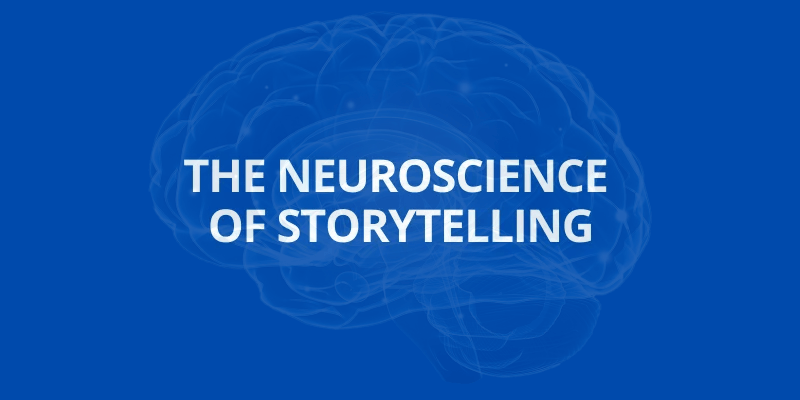
Humans are hardwired for stories. From cave paintings to cinema, every culture has used narrative to make sense of the world. Neurologically, stories engage us in a way that facts alone never can.
Research by the NeuroLeadership Institute and others shows that when we listen to a compelling story, our brains are “neural couple” with the storyteller, the listener’s sensory and motor cortices light up as if they were experiencing the events themselves.
In practical terms, we feel the story we see, hear, and even smell what the protagonist does and those rich details carve deep memories. Likewise, well-constructed stories trigger biochemical responses.
Paul J. Zak’s work has shown that emotionally charged narratives boost levels of oxytocin and cortisol in viewers, correlating with feelings of empathy. In Zak’s experiment, participants who watched an emotional video about a terminally ill child were more likely to donate money afterward. In short, stories make us care.
By contrast, lists of product features or dry statistics rarely engage our limbic system. That’s why even cutting-edge tech ads often lead with a person, scenario, or problem – not a spec sheet.
As the marketing summary bluntly stated, “People buy stories, not products”. While this precise quote is often attributed to thinkers like Seth Godin, the evidence backs it up 95% of purchasing decisions take place below conscious awareness.
We decide on a gut level first and long before we can recite the specs. Stories tap into that subconscious, they evoke emotions (pride, nostalgia, desire, fear, belonging) and let us “experience” the product in context. As Zak’s studies confirm, such emotional immersion makes us trust the storyteller (the brand) and remember the narrative details far longer.
- Emotional Bonding: Stories release oxytocin, forging trust and empathy. That makes us more likely to like and believe the brand.
- Memory Enhancement: Details embedded in story contexts are remembered up to 22× better than isolated facts.
- Subconscious Influence: Up to 95% of our decision-making is subconscious, driven by feelings. Narratives speak directly to that part of the brain.
These neurological insights explain phenomena like the success of emotionally driven ads. For example, a Nike commercial featuring Colin Kaepernick standing up for his beliefs sparked intense emotional engagement and led to a 31% spike in sales soon after.
The story sold more than shoes – it sold identity and ideals. Similarly, Apple’s iconic “1984” Super Bowl ad cast viewers as underdog liberators fighting conformity, aligning the brand with a larger cultural myth. It wasn’t just a computer ad, it was a call to feel part of something bigger.
In short, psychology and neuroscience both say the same thing, your customers want to be part of a good story. Facts alone rarely move us. As marketing legend Simon Sinek said, “People don’t buy what you do; they buy why you do it”.
Storytelling gives us that “why” the purpose or cause that resonates. And in today’s attention-scarce environment, a clear, emotional narrative is the only way to break through the noise.
Storytelling as Brand Positioning: Building Emotional Connections
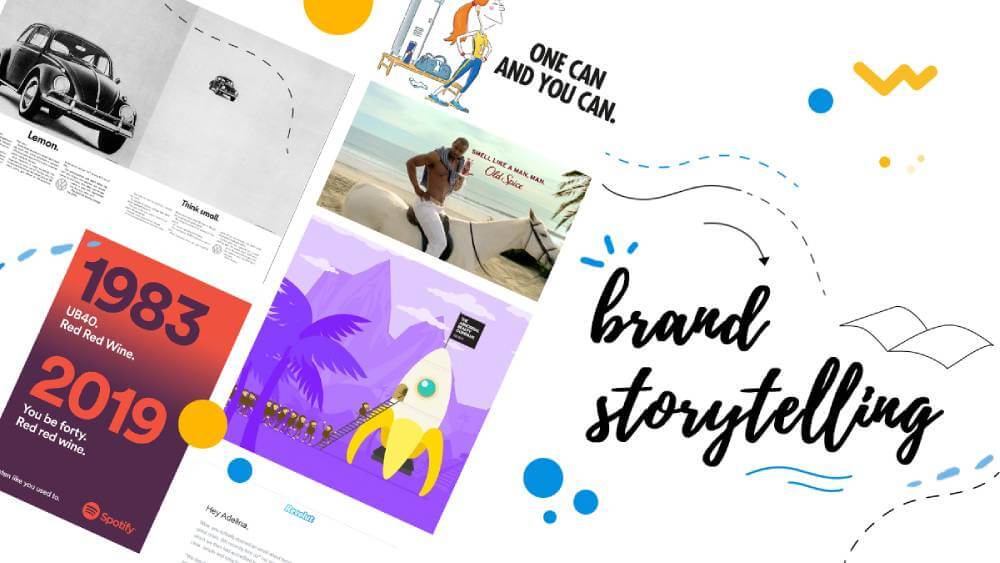
Beyond psychology, storytelling is a strategic branding tool. In crowded markets, a compelling narrative differentiates brands and earns customer loyalty. When consumers see a consistent story of who a brand is, what it stands for, and the journey it invites them on, it creates an emotional bond. Harvard Business Review authors note that brands that tell meaningful stories “forge connections” with fragmented audiences.
Emotional Differentiation
Emotional branding research confirms that this connection has real business value. A McKinsey study and accompanying Gallup data found that fully engaged customers, those who feel an emotional connection to a brand’s story are 52% more valuable than those who are “highly satisfied”. Emotionally attached customers buy more often, spend more per visit, and tolerate a higher price.
Similarly, an Institute of Practitioners in Advertising study reports that ads that provoke strong emotional responses can drive a 23% increase in sales compared to neutral ads. And 84% of consumers say they’re more likely to choose a brand that resonates with them emotionally. In other words, narrative appeal isn’t soft fluff – it translates into revenue.
Trust and Authenticity
Stories also build trust, which consumers demand. The 2024 Edelman Trust Barometer found that 81% of people must trust a brand before buying from it. A sincere brand story can be the foundation of that trust. By revealing a brand’s mission and values through story (rather than mere puffery), companies align what they say with what they do.
Consistency and authenticity make people believe in the brand. Consumers increasingly distrust pure advertising: 92% prefer ads that feel like a story rather than a hard sell. When brands succeed at authentic storytelling, customer loyalty follows. Research shows compelling brand narratives can boost loyalty by roughly 20%. It’s no coincidence that customers of story-rich brands are often their biggest fans.
Brand Archetypes
To tell a cohesive story, brands often adopt archetypal narratives (hero, rebel, guardian, etc.) that resonate culturally. For example, Patagonia and Ben & Jerry’s consistently paint themselves as advocates their story is about saving the environment or social justice, respectively.
Nike and Apple lean into the “hero’s journey”, the customer as champion overcoming challenges with the brand’s help. These archetypal frames make the story familiar and compelling. As one branding specialist puts it, people don’t want another product; they want a signal of belonging. Story-driven brands give that signal.
Key Point
Storytelling isn’t just an add-on; it’s the core of brand positioning. In a Forbes survey, marketing executives ranked emotional impact as the most essential element of storytelling.
When consumers perceive a coherent narrative across every touchpoint (ads, product design, packaging, social media), the brand feels real. 68% of consumers say brand stories have influenced their purchases, and 55% remember a product because of the story around it, not the specs.
By contrast, inconsistent or shallow messaging can confuse and repel customers. The data is clear, investing in a strong narrative identity yields measurable gains in engagement and loyalty.
Case Studies: Brands That Sell Stories, Not Products
To see storytelling in action, let’s see how some leading brands across tech, fashion, and e-commerce have turned narratives into success.
Apple (Technology and Lifestyle)

Apple’s marketing is a masterclass in selling an idea. From its early 1984 Super Bowl commercial to the “Think Different” campaign, Apple never advertised better specs, it sold a revolutionary identity. Ads featured innovators (Einstein, Gandhi) to imply Apple users are similarly trailblazing.
Today, Apple’s story revolves around creativity and personal empowerment. Product launches are keynotes that read like storytelling events, weaving user stories into every demo. This narrative pays off: Apple consistently enjoys staggering loyalty (over 90% of iPhone owners plan to repurchase) and commands a premium price.
Crucially, Apple’s marketing doesn’t push chips or camera megapixels; it paints a picture of a creative lifestyle. As one analyst observed, Apple sells class, not computers. This is storytelling in brand form.
Tesla (Sustainable Innovation)
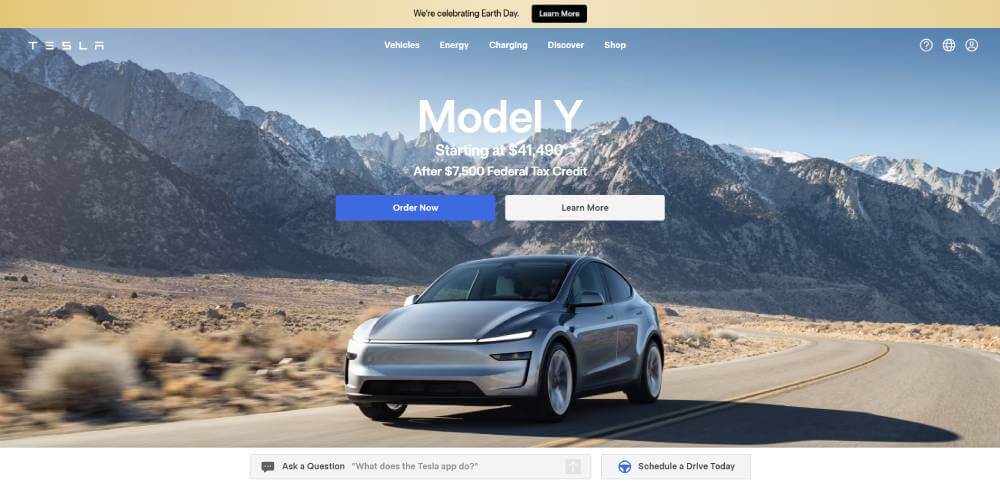
Tesla’s brand is less about the car and more about a mission: accelerating the world’s transition to sustainable energy. Founder Elon Musk is cast as a visionary hero tackling climate change. Each product introduction (roadster, Model S, Cybertruck) is presented in the context of a larger quest.
Tesla’s narrative emphasizes that customers aren’t just buying an electric car, they’re buying into a future of renewable energy and tech innovation. This story has created fervent loyalty, and Tesla’s market valuation and fanbase far exceed traditional automakers. (At its peak, Tesla became the world’s most valuable carmaker, largely on story-driven hype).
Moreover, Tesla’s “Master Plan” blog posts reveal roadmap stories (solar roofs, Gigafactories) that make customers feel part of the journey.
The key takeaway: Tesla doesn’t just build cars; it invites people to join a sustainability movement.
Amazon (Customer Obsession)
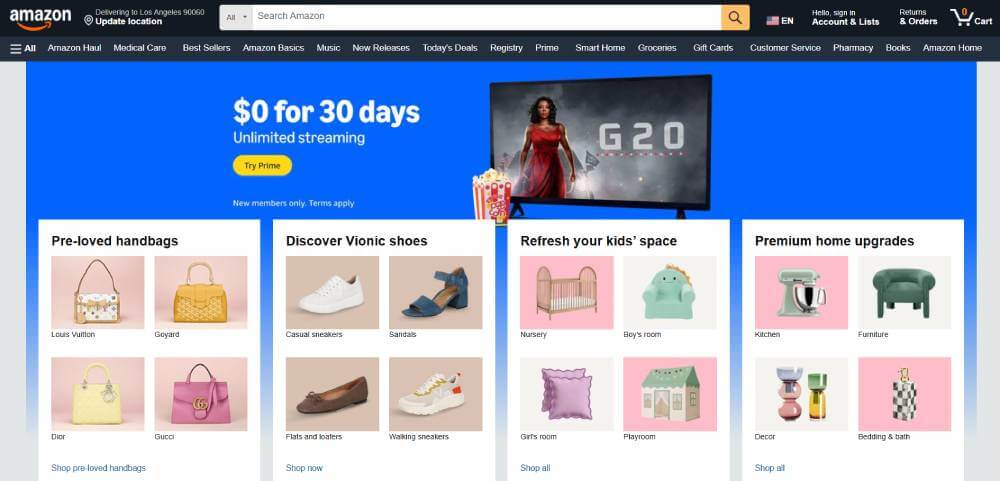
Amazon’s famous mantra is “customer obsession”, and its brand story follows that creed. The company’s founder, Jeff Bezos, often recaps Amazon’s humble origin (selling books from a garage in the 1990s) as a narrative of relentless focus on the customer. Every service – Prime, AWS, Kindle, Alexa – is cast as a solution in the grand story of making customers’ lives easier.
Amazon rarely sells features; it sells convenience, choice, and trust. For example, the story around Amazon Prime is one of belonging to an exclusive club of convenience and deals. This storytelling has built Amazon’s extraordinary reach: 70% of U.S. consumers have Prime, and over half of e-commerce sales flow through Amazon’s ecosystem.
The brand’s emphasis on user reviews (real customer stories) also exemplifies narrative power people trust other buyers’ stories over ads. (Notably, peer reviews a form of organic storytelling – are now more trusted than brand messages).
Thus Amazon’s narrative isn’t in flashy ads, but in constant acts that reinforce its story: free shipping, 24/7 support, and user-driven content. In effect, Amazon tells the story of Earth’s most customer-focused company, customers have given the brand near-legendary trust.
Airbnb (Belonging Everywhere)
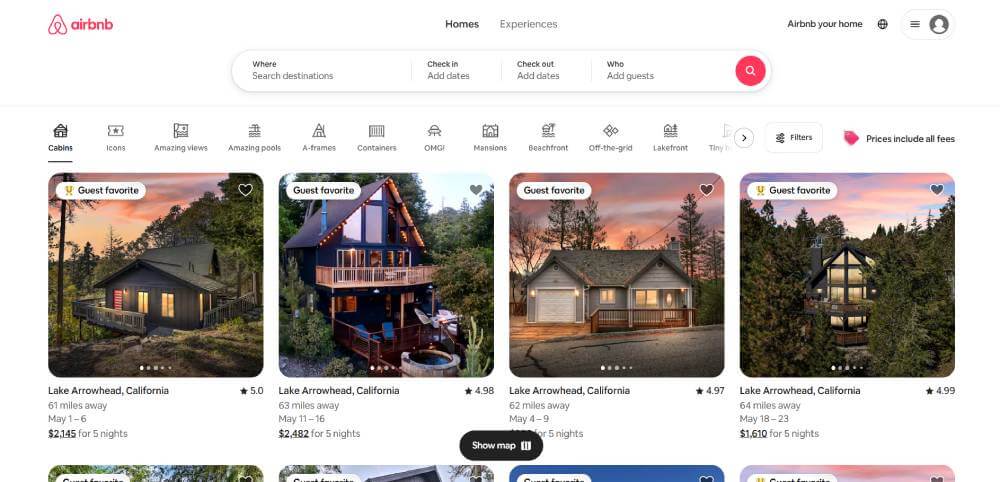
Even in e-commerce hospitality, storytelling reigns. Airbnb famously embraced the tagline “Belong Anywhere”. Its brand content is filled with real host and guest stories showcasing diverse cultures and connections. These narratives address the trust barrier of staying in strangers’ homes by highlighting happy experiences and communities, Airbnb sells a vision of a global community rather than just a room booking.
For example, Airbnb ads often follow a traveler’s journey in an unfamiliar city, culminating in a feeling of home. This empathetic storytelling built Airbnb from a small startup to a travel giant.
In 2021, Airbnb went public with the slogan “Our Story is Your Story”, underscoring that the platform is about people, not products. By letting users tell their own stories on the site (review narratives, social shares), Airbnb leverages storytelling at every step to create loyalty.
The result: Airbnb has billions in revenue and high customer retention, even in a competitive market.
Nike (Inspiration and Identity)
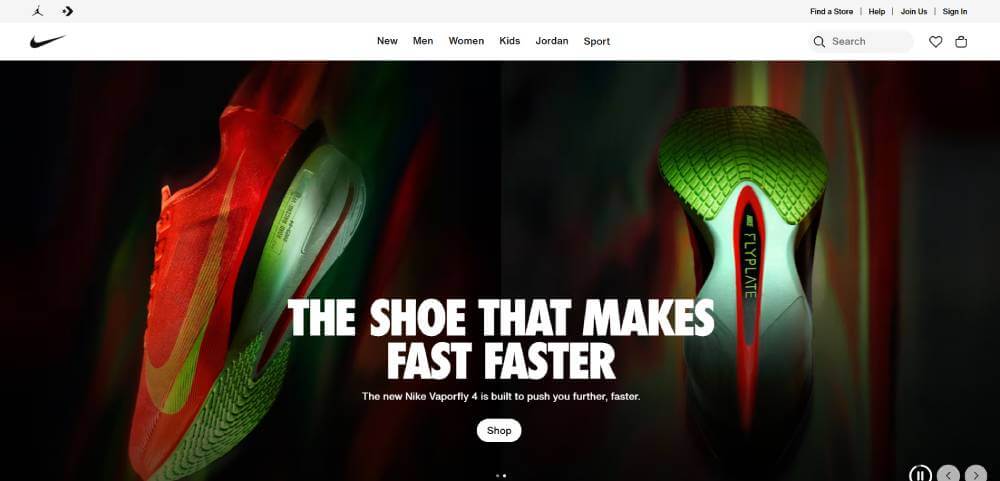
Nike long ago recognized that selling shoes alone would be a losing proposition. Instead, Nike sells inspiration, “Just Do It” isn’t a claim about sneakers, it’s a call to personal greatness. Nike’s ads usually feature athletes overcoming obstacles, with the brand’s gear just a footnote. Perhaps the most famous example is Nike’s ad featuring NFL quarterback Colin Kaepernick.
The spot didn’t list shoe specs, it told the story of Kaepernick’s protest and courage. Despite the controversy, the campaign resonated deeply: Nike’s sales jumped 31% after it aired. The brand became a symbol for standing up for something, appealing to a broad, values-driven audience.
Nike’s storytelling doesn’t stop with big ads. Its social media and apps share countless personal success stories (think Nike Training Club), always centering the person as the hero. This has built an almost cult-like loyalty: Nike customers are not just buying shoes, they are purchasing membership in a culture of achievement.
Patagonia (Purpose Over Profit)
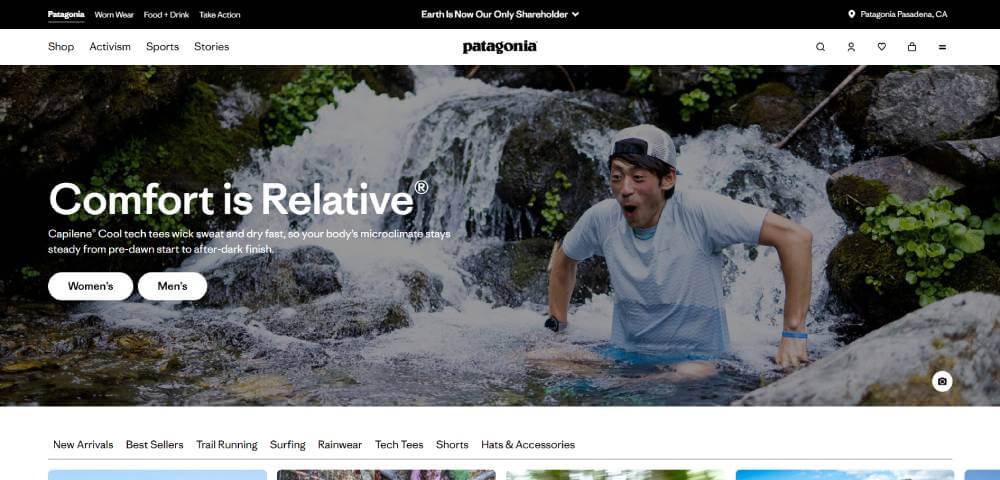
Patagonia tells a story many marketers shy away from “Don’t Buy This Jacket”. In a bold 2011 ad, Patagonia urged customers to resist consumerism and consider environmental impact. Counterintuitive as it seems, this anti-ad strategy underscored Patagonia’s authentic values.
The narrative is clear, Patagonia’s mission (saving the planet) is more important than pushing sales. Customers responded by believing in Patagonia’s sincerity and flocking to the brand. Patagonia’s growth has been steady; many surveys find that brand purpose drives sales for socially conscious consumers.
For example, a study by Cone Communications found that 87% of Americans would buy a product because a company advocated for an issue they cared about. While we don’t have a specific Patagonia sales number to cite here, the broader truth is that values-led storytelling attracts a loyal following.
Patagonia’s customers know they aren’t just buying outdoor gear, they’re joining an environmental cause. This ethos has given Patagonia an unusually passionate customer base and strong word-of-mouth, the ultimate testimonial for story-driven branding.
These cases share a theme
The benefits they sell are emotional or aspirational, not material. Apple offers creativity, Tesla provides a better future, Nike offers empowerment, and Patagonia offers purpose. The products are mere props in the larger narrative. And that’s precisely why consumers rally to them.
Storytelling and Brand Metrics
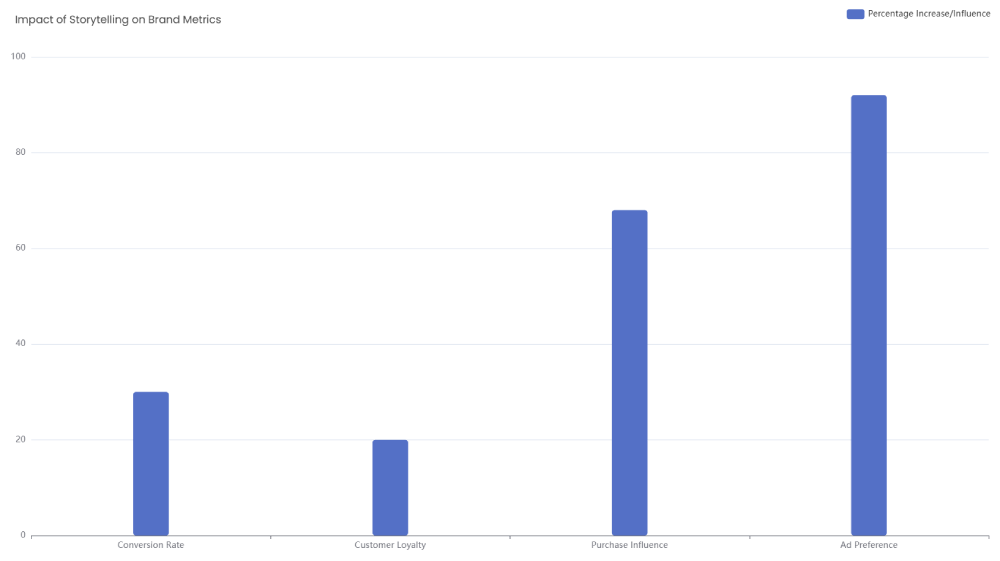
Data on the effectiveness of storytelling in marketing is compelling. Recent surveys and studies quantify what marketers intuitively feel: narrative-driven campaigns outperform bland product pitches on key metrics. For instance, one analysis found that businesses using effective storytelling saw roughly a 30% increase in conversion rates compared to control groups.
In plain terms, web visitors or leads who engage with stories were 30% more likely to become customers than those who saw only technical pitches. Likewise, brands with strong narratives enjoyed a 20% uplift in customer loyalty. Many consumers stick with a brand longer (and spend more) when they feel the story resonates with them.
Consumers Prefer Stories: The appetite for stories is crucial. Surveys show that 92% of people say they would rather watch an ad that feels like a story than a straightforward sales pitch. Another poll found that 68% of consumers have been influenced to buy by a brand story.
Storytelling is not nice to have; it’s a consumer expectation. Marketers report that storytelling content (blogs, videos, social media narratives) often yields the highest engagement. 44% of marketers say branded video stories produce the best results of all video types. Modern audiences are hungry for narrative-driven content on any channel.
Memory and Recall: As noted earlier, narrative facts stick in minds far longer. About 55% of people remember a story-driven ad or message versus 20% for a fact-based message. This story advantage helps build long-term brand recall. When a customer comes to buy later, who will they remember: the product spec or the story about how it solved a life problem? Good storytelling ensures it’s the latter.
Leading with Data: The chart above highlights these effects. It compares four key metrics for story-driven marketing: Conversion Rate, Customer Loyalty, Purchase Influence, and Ad Preference. Notice how narrative-centered metrics skyrocket: 68% say a compelling brand story influenced their purchase, and 92% say they prefer story-based ads.
- Conversion Rate: +30% higher when ads tell a story.
- Customer Loyalty: +20% for brands that consistently tell a compelling story.
- Purchase Influence: 68% of consumers are guided by brand storytelling.
- Ad Preference: 92% of people would rather see a story-based ad.
This data-driven perspective shows that storytelling can deliver significant ROI. Of course, results vary by industry and execution, but the trend is clear: narrative marketing moves the needle. Beyond raw sales, metrics like brand lift, website dwell time, and social shares tend to climb under storytelling campaigns.
Brands that embrace a narrative approach also often see higher engagement (likes, shares, comments) on social media. Indeed, one Content Marketing Institute report noted that engaging video stories were 44% more likely to be cited by marketers as delivering the best results.
In sum, storytelling works and not just anecdotally. Trusted sources like Nielsen and HBR confirm that emotional narratives drive tangible growth. The business case is airtight: consumers want stories, and those who give them good ones see a real lift in conversion, loyalty, and trust.
Storytelling Frameworks and Strategies
To put theory into practice, brands often follow structured storytelling frameworks. These give marketers a repeatable recipe for crafting compelling narratives. Two popular approaches are the Hero’s Journey and Donald Miller’s StoryBrand framework, which treat the customer as the story’s protagonist (the hero) and the brand as the guide.
Hero’s Journey

Originating from mythologist Joseph Campbell, this model maps a classic narrative arc, a hero leaves the ordinary world, faces challenges, and returns transformed. In branding, customers are cast as the heroes on a quest (e.g. to be healthy, successful, or creative).
The brand plays the mentor or magical helper (Gandalf or Obi-Wan), providing tools or wisdom (products/services) to win the day. For example, a fitness brand might frame a customer as the hero battling the villain of procrastination or poor health, with the brand’s coaching app as the guide.
Key stages include: The Call to Adventure (brand invitation), Trials (customer’s pain points), Climax (overcoming challenges with brand help), and Resolution (customer’s success and transformation). Marketers can use this journey by aligning campaigns with each stage (e.g., running motivational “call to action” ads, then tutorials, then celebratory user stories).
StoryBrand (SB7) Framework
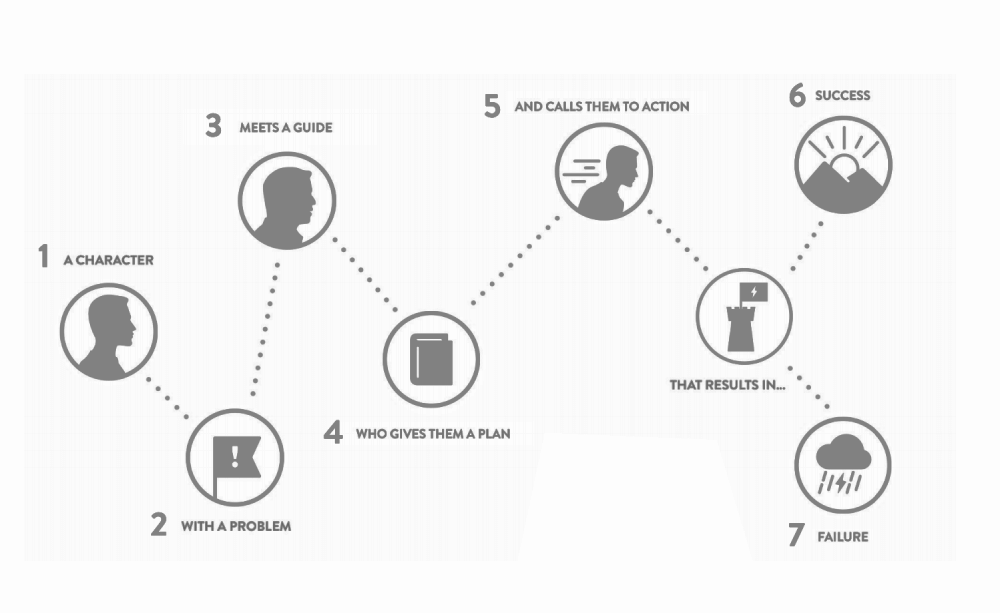
Popularized by Donald Miller, this framework consists of seven elements: (1) a character (the customer) who (2) has a problem; (3) meets a guide (the brand) who offers (4) a plan; (5) calls the hero to action; which leads them to either (6) success or (7) failure.
The brand’s voice is portrayed as an empathetic guide that understands the customer’s challenges. For example, Apple’s tagline ‘Think Different’ not only suggests a plan but also calls the audience to action (‘join the ranks of innovators’), offering the promise of success through belonging to a creative community.
Marketers use SB7 to clarify messaging in every piece of content should either pose the hero’s problem (e.g. “Tired of clutter?”) or offer the guide’s solution (e.g. “Our tool will organize you”), and always end with a call to action (“Get started now”). This keeps the narrative crisp and customer-focused.
Other strategies for storytelling include
Origin Stories
Many brands share their founding tale to humanize themselves. For example, the classic legend of Starbucks (high school friends starting a coffee shop) or the start-up-from-garage story of HP. These stories make brands relatable and trustworthy. Even B2B companies can share their founders’ journeys of overcoming adversity to build the company.
User/Employee Stories
Leverage real people. Share customer testimonials as mini-stories (“how Jane used our product to launch her small biz”), or showcase employees (“behind-the-scenes story of our developer”). Real stories add authenticity and often highlight values better than scripted ads. UGC (user-generated content) on social media is a powerful narrative tool – the brand’s story told by its fans.
Conflict and Resolution
Every good story needs tension. In marketing, this means identifying your customer’s villain (time anxiety, high prices, loneliness, etc.) and positioning your brand as the solution. Visualize that conflict and show how the hero (customer) overcomes it by using your product. For instance, an insurance company might depict a young family facing a crisis, and then show how quick support from the insurer brings relief. The tension-release arc makes the message memorable.
Sensory Language and Details
Good storytellers include vivid detail and multisensory cues. Marketers should do the same: describe how it feels, tastes, or looks to use the product. Nike doesn’t just say “shoes are fast”, they show and describe the exhilaration of a marathon finish line. Evoking the senses deepens immersion. Even in B2B, painting a scene (“Imagine your team collaborating seamlessly in our software”) helps prospects envision the story of success.
Consistency Across Channels
Ensure every touchpoint tells the same core story. Your website, social posts, packaging, and customer service scripts should reinforce one narrative. A disjointed story across channels dilutes the impact. For example, if your brand’s story is about sustainability, every email and tweet should reflect that value, just as your product designs and policies do.
Data and Iteration
Just as marketers use A/B testing for ads, they can test story variants. Use analytics to see which narrative elements drive engagement. Metrics like social shares, video completion rate, or changes in brand sentiment can indicate if the story is resonating. Stories are creative, but also iterative: refine your brand narrative based on genuine feedback.
Practical Takeaways: Building a story-driven brand requires action. Here are a few strategies experts recommend:
- Lead with Why: Open your message with the customer’s why, not your what. For example, start an ad with the customer’s challenge, then introduce your product as the help. (Apple’s start-up ad begins by showing students creating projects, then shows MacBooks powering that creativity.)
- Be the Guide, Not the Hero: Position the customer as the journey’s hero. Use language like “you” and “your” to involve them. Frame your brand as a helpful guide (“We’re here for you” or “Your success story starts here”).
- Use Authentic Voices: Whenever possible, let real customers tell their own stories. Video testimonials or case studies are often more important than any scripted copy.
- Focus on Emotional Benefits: Beyond features, advertise the emotional outcome. Does your product give confidence, security, joy, or belonging? Illustrate that feeling. (Nike doesn’t list shoe tech; it shows the emotional high of victory).
- Leverage Visual Storytelling: Humans process images faster than text. Use compelling visuals (photos of people using your product in real life, infographics that tell a story, mini-documentary videos) to narrate your message. The brain’s mirror neurons will help viewers feel the story.
By applying these frameworks and tips, marketers can transform a bland “buy this widget” pitch into a vibrant brand narrative. According to one marketing professor, “Narrative is the context in which information makes sense”. For customers to understand why they should care about your product, you must wrap it in a meaningful story that fits their world.
Conclusion
Across psychology labs, marketing surveys, and real-world brands, the verdict is clear, storytelling sells. In an era when consumers face information overload, a compelling narrative cuts through the noise and builds genuine connections.
As Harvard Business Review observed, what consumers want most from brands today is clarity of story and authenticity of purpose. They want to feel they belong to the story, not just see another product ad. From Apple’s genius-inspiring campaigns to Patagonia’s activist manifesto, from Nike’s hero-making ads to Airbnb’s tales of home away from home, successful brands put story first.
They back it up with data: a typical campaign infused with narrative can boost conversions by 30%, deepen loyalty by 20%, and influence purchases for over two-thirds of consumers. In short, the brands that tell the best stories win in the marketplace.
For marketing leaders and startup founders, the lesson is actionable Invest in narrative. Spend as much time crafting the “why” of your brand as you do on the “what”. Embrace customer stories and authentic brand mythology. Structure your messaging around familiar story arcs or clear frameworks like the Hero’s Journey or StoryBrand. Use the data-driven insights above to justify the budget for branded content, customer tales, and experience-driven campaigns.
If you do, your audience will reward you. As one digital marketing guru put it, People don’t just buy products; they buy the products that tell the best stories. Let that be your guiding principle.
Key Takeaways:
- Tap Emotions: Use storytelling to engage the subconscious drivers of decision-making (95% of which are emotional).
- Create Empathy: Position your brand as a relatable guide and your customer as the hero of the narrative.
- Be Authentic: Align your story with authentic values and actions; consumers quickly spot dissonance.
- Use Frameworks: Employ narrative structures (Hero’s Journey, StoryBrand SB7) to make your message coherent and powerful.
- Show, Don’t Tell: Leverage visuals, videos, and real-world examples to bring your story to life.
- Measure Impact: Track how storytelling affects conversions, loyalty, and recall using metrics and qualitative feedback.
By telling a better story than the competition, your brand will not only sell products but will build fans. And in today’s market, that is the ultimate competitive advantage.
